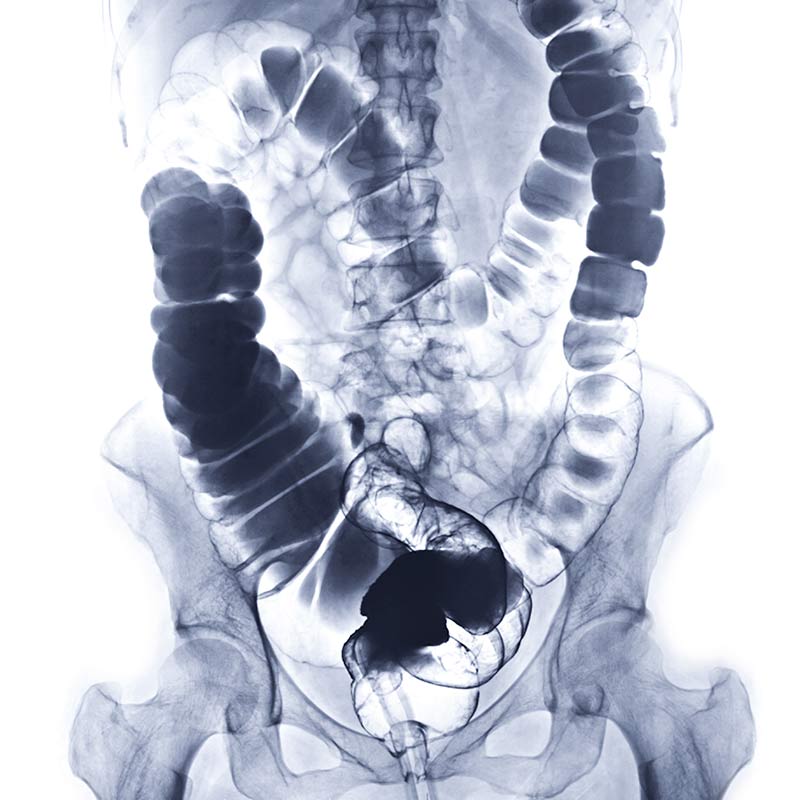Fluoroscopy
Fluoroscopy is a type of X-ray that captures moving body structures, such as digestive functions, in a live, movie-like sequence allowing the radiologist to observe the functioning as well as the anatomy of internal organs. Common exams that use fluoroscopy include upper gastrointestinal exams (UGI), barium enemas (BE), and Intravenous Pyelograms (IVP). It also is used to quickly guide the radiologist when performing a procedure that involves placing a tube, catheter or other device internally. Examples include angiography, myelograms and interventional radiology procedures. For nearly all of these exams, static or still images are also taken to document what is seen or done at the time of the exam.
A fluoroscopy unit consists of three components: the fluoroscope, which moves over the body part of interest; the monitor that displays the moving image; and the X-ray tube that generates the X-rays that pass through the body and create the image on the fluoroscope.

Gastrointestinal Imaging
Gastrointestinal radiology includes imaging examinations of the throat, esophagus, stomach, liver, gallbladder, bile ducts and pancreas as well as the small and large intestine.
GI Fluoroscopy exams include:
- Swallowing study
- Esophagram
- Upper GI series (UGI)
- Small bowel series (SBS)
- Barium enema (BE)
Special Procedures Include:
- Image guided biopsy
- Visceral angiography
- Embolization
- Thrombolysis and angioplasty
Genitourinary Imaging
Uroradiology is the study of the entire urinary tract that includes the kidneys, ureters, urinary bladder, urethra and reproductive organs. Interventional procedures may be necessary to diagnose certain conditions of the urinary tract.
GU Exams and Procedures include:
- Intravenous Pyelography (IVP)
- Cystography
- Voiding Cystourethrography (VCUG)
- Retrograde Urethrography (RUG)
- Hysterosalpingogram
Interventional Procedures include:
- Percutaneous nephrostomy
- Renal arteriography, angioplasty and stent placement

